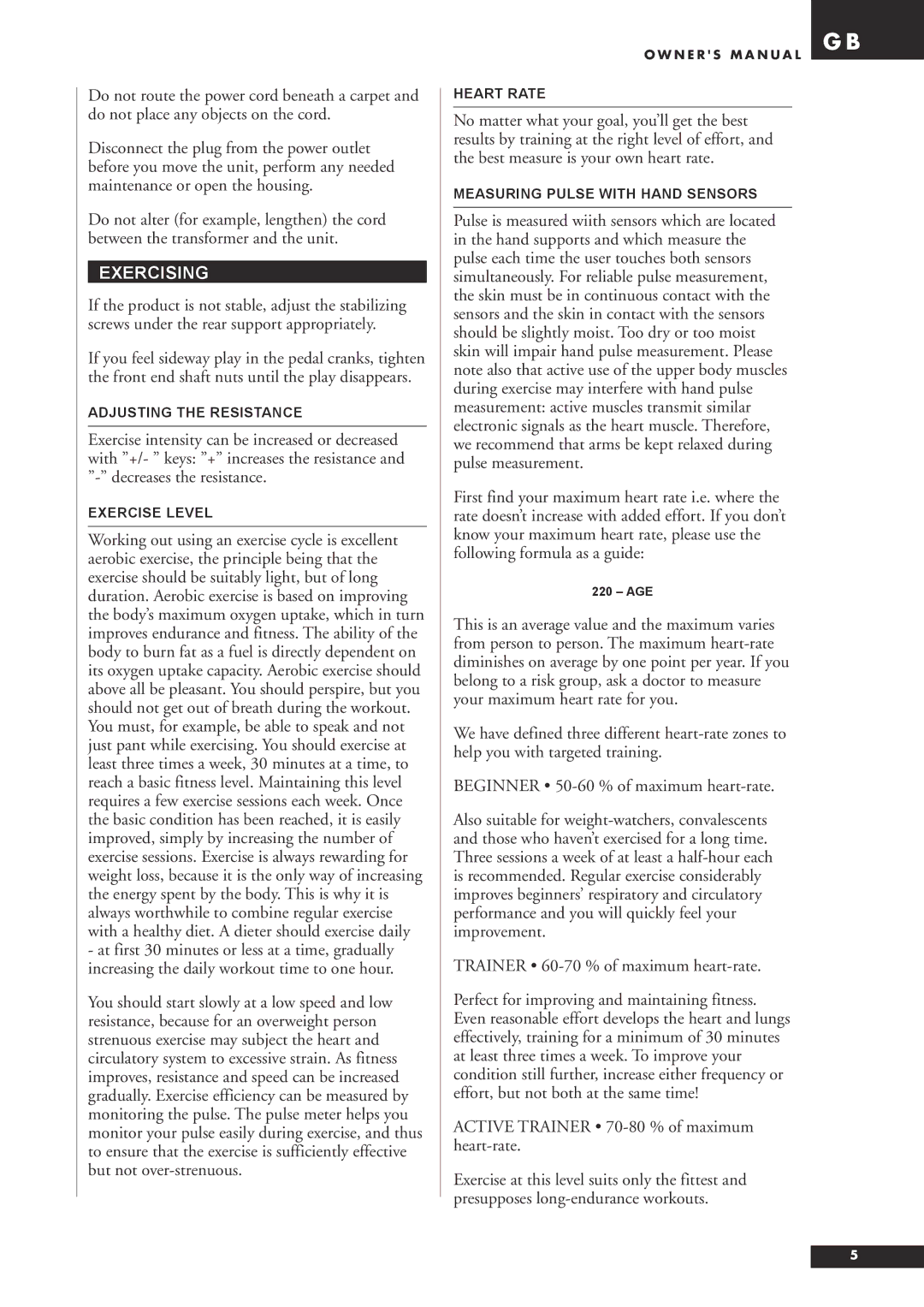C20 specifications
The Tunturi C20 is a standout in the realm of stationary bikes, designed to cater to both fitness enthusiasts and casual users. This bike combines advanced features, user-friendly technology, and solid construction to provide an effective workout experience.One of the main features of the Tunturi C20 is its ergonomic design. The bike's adjustable seat ensures that users of varying heights can find their optimal riding position, promoting comfort and preventing strain during workouts. The seat's cushioning adds an extra layer of comfort, making longer sessions more enjoyable.
Incorporating a robust flywheel design, the Tunturi C20 delivers a smooth and quiet pedaling experience. This is crucial for users who may want to exercise at any hour without disturbing others. The resistance system is electronically controlled, allowing for quick and easy adjustments. It includes multiple resistance levels, which cater to a variety of fitness levels and goals, from beginners to advanced cyclists looking to challenge themselves.
Technologically, the Tunturi C20 is equipped with a backlit display that offers real-time feedback. Users can track their speed, distance, time, calories burned, and heart rate, ensuring they stay informed about their performance throughout workouts. The bike also includes heart rate monitoring features, enabling users to stay within their target heart rate zones for optimal results.
Furthermore, the Tunturi C20 is compatible with various fitness apps, promoting an interactive and engaging workout experience. This connectivity allows users to integrate their cycling sessions with other workouts, track their progress over time, and set achievable fitness goals.
The bike's build quality is another notable characteristic. Sturdy materials ensure durability, and the compact design makes it suitable for home use without taking up excessive space. Additionally, the Tunturi C20 includes built-in speakers and ports for MP3 connections, enabling users to enjoy music or multimedia during their workouts.
Overall, the Tunturi C20 embodies a blend of functionality, comfort, and modern technology. Its features cater to a broad spectrum of users, from those just starting on their fitness journey to seasoned athletes. The combination of an ergonomic design, customizable resistance, and advanced tracking capabilities make the Tunturi C20 an excellent investment for anyone looking to enhance their fitness routine.

